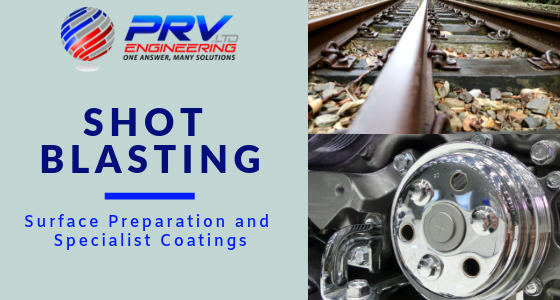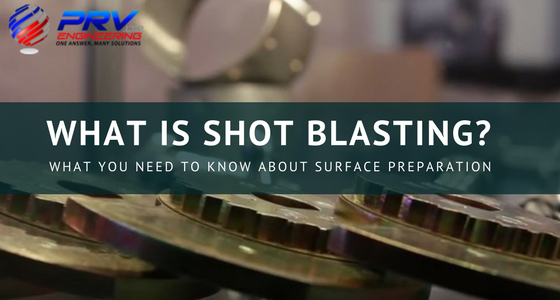When it comes to finishing and cleaning operations, shot blasting is one of the most effective methods for surface treatment. It is a technological process used to remove various impurities from different surfaces using abrasives. In this article, we look at a few different shot blasting techniques, applications, and pros and cons with some additional FAQs at the end.
Shot blasting is used to clean, polish or strengthen metal preparing it for the application of overlays or specialist coatings. It is a technological process used to remove various impurities from different surfaces using abrasives. This includes removing rust or old layers of paint to prepare surfaces for further processing like painting, welding or powder coating. Many industries working with metal use shot blasting, including aerospace, automotive, construction, shipbuilding, rail among many others.
Last week we covered electric hoverbikes in Dubai and today we’re continuing along that path but with a slight twist. What do you get when you cross a motorcycle with new technology and a mountain bike? The answer is simple – a hybrid electric motorcycle called the LMX 161-H. It resembles downhill bicycles and is described as a super-light electric motorcycle weighing in at just 42kg. Early reports suggest it’s ideal for off-road, freeride and enduro use but just as suitable for urban travel.
Two young French engineers and avid riders, Adam Mercier and Lucas Suteau, are responsible for this concept as they see a future for electric motorsport. Their vision turned prototype and the project has quickly become a crowdfunding campaign. Their aim is to get the worlds lightest freeride electric motorcycle to hit the streets all over the world. If all goes according to plan, the first deliveries will go out in May 2018.
Finishing image of industrial spray painting Finishing any engineering job properly is just as important as any other operation along the production cycle. And by finishing the engineering job, we’re not talking about tidying the file and completing the invoicing. We are talking about the paint or powder coating finish to the product
The appearance of a finished product will always have an impact on the saleability. After all, if something looks rough and unfinished it’s less likely to sell. In addition, there’s the safety impact to consider. Rough edges and burrs can not only put buyers off but can be a serious health and safety risk. So an important part of finishing is to remove those risks.
Finishing with a flourish might sound a little flamboyant. But precision engineering isn’t exactly the sexiest of subjects, so please allow us at PRV Engineering a little leeway, and an opportunity to indulge ourselves!
Finishing any engineering job properly is just as important as any other operation along the production cycle. You’ll have gathered by now that we are talking about engineering finishing rather than simply closing down the job file and archiving it away. No, the sort of finishing that we allude to in this context is painting, both wet paint and electro powder coat.
PRV Engineering have come a long way since our lowly beginnings, when we first set up in 1986 manufacturing tamper proof Lids for the Metal Packaging Industry. We are now one of the leading suppliers of engineering services in Europe, and the journey has been long, and arduous, but ultimately rewarding.
Shot blasting has emerged as one of the most effective, as well as possibly the cheapest technique for surface preparation prior to operations such as galvanising, electroplating, welding, enamelling, glass coating and rubberising.
Shot blasting is useful for many industries, including the aerospace, ship building, forging and steel industries because it provides a consistent and uniformly fine, rough or matt surface depending on the techniques and tools used and the type of surface required.
Previously we published the post Shot Blasting Techniques: Things You Should Know but we felt that we’d now like to take this opportunity to talk a bit more about the actual benefits of shot blasting over and above other techniques often used for surface preparation.
Plus we’d like to lay out the types of shot commonly used and describe the situations they work best in.
So here are some of the major benefits associated with shot blasting as a surface preparation technique –
- Shot blasting eliminates the usage of non-eco friendly and harsh chemicals
- Shot blasting provides higher production rates, wider abrasive selection and better blast pattern accuracy
- The finished surface obtained is absolutely free from chemical deposits, scales and dust content. Shot blasting does not remove any virgin metal when removing scales
- Shot blasting facilitates the formation of a permanent bond between the protective coat (zinc, paint or epoxy) and the shot blasted surface. It also helps to detect surface faults or defects
- Shot blasting increases longevity and durability of protective surface coats as it adheres better to the shot blast cleaned and scale free surface
These are some of the many reasons why industries in the manufacturing sector opt for various shot blasting techniques for their surface preparation requirements.
Shot Blasting: Types of Shot Used
While shot blasting primarily refers to blasting the surface with small steel pellets or shots, many other types of shot blast materials are also used. Here we will take a look at some of the commonly used shots –
- Steel Shots – Here, small steel balls of diameter 1 to 6 mm are fired at high speed against the surface being prepared. The size of the balls determines the finishing achieved. Smaller steel shots are used for more polished surface, while larger ones lead to a rougher finish.
- Chilled Iron Grit – These are angular, abrasive material used for general blast cleaning, i.e., for removing oxides and paints from ferrous castings and carbon steel. However, blasting with chilled iron grit is quite aggressive and therefore not suitable for softer metals like aluminium.
- Steel Grit – Blasting with steel grit is used for jobs where aggressive cleaning is required, such as for removing contaminants from steel or any other metal.
As one of the leading engineering services, PRV Engineering Ltd, can provide you with state of the art shot blasting services for all your surface preparation requirements.
When it comes to finishing and cleaning operations, the shot blasting surface treatment technique is a highly effective option. The shot blast technique uses high velocity steel abrasives in a controlled manner (at speeds ranging between 65 and 110 metres per second). This high speed controlled blast creates an abrasive impact which removes surface contaminates, thereby making it an effective method for cleaning iron, steel, forgings, machine parts, fixtures etc. However, before you commission a shot blasting service, there are a few important things you must know about this technique.








Recent Comments